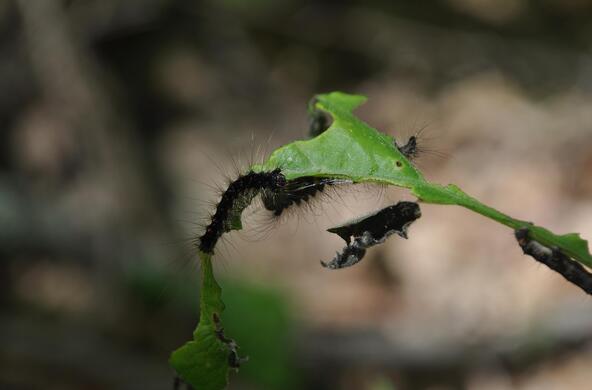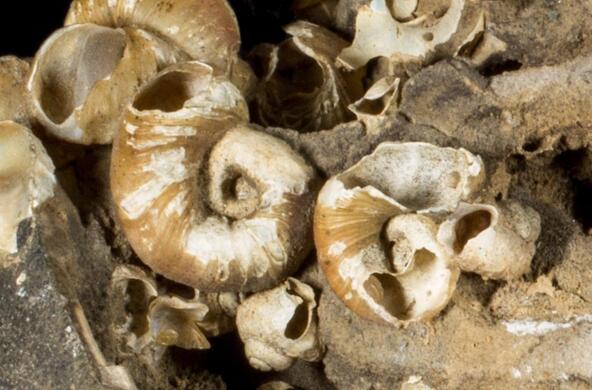- In the last 125 years, bobcats have recovered significantly from extremely low numbers, with several million individuals found throughout North America today.
- Living at the interface of urban and rural environments, bobcats face many human-caused dangers, including loss of habitat to roam, automobiles, and rodent poisons.
- Bobcats help reduce the spread of diseases from animals to humans partly because they and other large mammals are poor disease vectors. Bobcats also prey on the small rodents that easily transmit pathogens.
- It’s legal to hunt bobcats in most of the United States. California, which has for five years closed the bobcat season, may reinstate hunting in 2025. Some researchers suggest that regulators should more carefully consider the role thriving wildcat populations play in protecting human communities from zoonotic diseases before expanding hunting.
A bobcat, with its characteristic reddish fur and black markings, trots across a snow-covered field in central Oregon, in the U.S. Pacific Northwest, hunting birds at the Warm Springs National Fish Hatchery. It could almost be mistaken for a giant domestic cat, except for its massive legs, a shorter neck than any house feline, ears topped with thin tufts of dark fur, and a stubby tail standing up straight. Though seldom seen by people, Lynx rufus is the most successful small wildcat in North America.
“Bobcats are in the process of a large-scale recovery and have an almost continental distribution, in the United States, at least — from the West to the East, and North to South,” said Taal Levi, a biologist at Oregon State University who studies the effects of hunting, disease and climate change on wildlife.
Bobcat numbers were nearly nil by around 1900, but have rebounded to several million today, ranging from southern Canada through the contiguous United States into southern Mexico.
They’re resilient, even when living at the edge of asphalt and near people. Bobcats remain wild and elusive while hunting and residing near towns. Security cameras often catch them skulking down roads and up driveways, sometimes rummaging in people’s gardens, chasing a rabbit, or tossing around a mouse snatched from beneath a foundation. Bobcats also use human-built hiking trails — or, perhaps, it’s humans who made trails along the bobcats’ forested routes.
“I often saw them hunting on the trails I ran [near San Francisco, and] running in front of me on trails. Their presence was a reminder of the wildness that still exists in our urban spaces,” says Zara McDonald, who founded the Felidae Conservation Fund to study and reduce threats to large cats living on the urban fringe. The fund’s new Bay Area Bobcat Project monitors “the health and movement of bobcats in urban-edge habitats and studies the impacts of human activity on their populations,” McDonald told Mongabay in an email.
Strong as its numbers may be today, the species faces many human-caused dangers: from the built environment, road traffic, and widely used rodent poisons. Yet we continue benefiting from the strong presence of these stealthy small cats in our ecosystems. Their being here lowers the risk of zoonotic disease (those passed from animals to humans), partly because bobcats are poor reservoirs for known diseases, and also because they help control mice, a major disease vector.
This “solitary bobcat was briefly spotted at Warm Springs National Fish Hatchery [in central Oregon in January 2024] where it was preying on nearby birds,” explained Andrea Sapuay with the U.S. Fish and Wildlife Service.
Status good but facing many risks
Bobcats are listed as a species of least concern on the IUCN Red List of Threatened Species. The IUCN, the global wildlife conservation authority, reports that development, the fur trade, rodent poison, and habitat loss hindering the species’ movement safely throughout its range all threaten bobcat survival.
Canine distemper has affected bobcats in eastern Canada, and conflicts with domestic and feral dogs in northern Mexico also threaten the wildcat. Hybridization between bobcats and Canadian lynx (Lynx canadensis) may require “conservation actions for the endangered lynx recovery,” according to the IUCN.
Florida is the only U.S. state where bobcats are reported declining. There, exotic and invasive Burmese pythons (Python bivittatus) eat the same small mammals that the wildcats hunt. In California, bobcats are estimated to number 70,000 to 100,000. The population is doing so well there, in fact, that state officials are considering whether to reinstate bobcat hunting in 2025 after a five-year ban. Hunting L. rufus is legal in most of the rest of the United States.
“Here in the East Coast of the U.S., they are one of our larger mammals,” said Felicia Keesing, a biologist and researcher at Bard College in New York state, whose 2021 study, carried out along with Richard Ostfeld of the Cary Institute of Ecosystem Studies, found that biodiversity loss increases the risk of human exposure to known and new zoonotic pathogens.
Bobcats are predators, Keesing noted, so “are more sensitive to biodiversity loss. They need a big area” to roam. Yes, bobcats may wander through towns and subdivisions, she added, but that isn’t optimal behavior, and these wildcats need more in terms of habitat: “A bobcat needs a big area of forest to survive. It’s not that they won’t ever leave that forest and wander into someone’s yard. But they don’t just need a yard. They need the forest.”
To thrive in urban northern California, bobcats must be able to move from wild mountain range to mountain range without being blocked by the human civilization found in the valleys between. Laurel E.K. Serieys led a 2021 bobcat study conducted by researchers from the University of California, Santa Cruz, and the University of Cape Town in South Africa. For 131 days, the team tracked the movements of 36 bobcats they had trapped, radio-collared and released to see how they moved along two narrow, fragmented, partially developed corridors, moving from California’s Coyote Valley to the Aromas Hills — a distance of about 60 kilometers (40 miles).
These particular natural corridors are known as the “last chance” routes for wildlife moving between the Santa Cruz Mountains and the Diablo and Gabilan ranges. Corridors like this one are vital for genetic mixing and maintaining species resilience.
However, the researchers found that traveling these routes can be dangerous. Most of the bobcats found dead in the area (some collared and some not) had been hit by vehicles or died of disease. “Our findings have driven conservation action through land acquisition,” the researchers wrote.
The northern California bobcat study also determined that 94% of those found dead had been exposed to rat poison, probably by eating small mammals that had eaten the poison. These toxins are anticoagulants that kill rodents by preventing blood clotting, which makes them bleed to death. For a decade, California has limited the use and, since 2020, the sale of the most common of such poisons. In January 2024, diphacinone, the most widely used poison, was banned for most uses.
Past research documented a similar mortality pattern. A 2018 study led by Devaughn Fraser of the University of California found that anticoagulant rodenticides hurt the health of bobcats that eat poisoned dead rodents. A 2007 study of bobcats and mountain lions in Southern California found more than 90% tested positive for the same poisons.
Helping reduce zoonotic disease
Humanity has good reason to want to conserve bobcats and other large mammals. Large animals in an ecosystem reduce the spread of disease-causing organisms that can pass from wild animals to humans, a mechanism known as the dilution effect.
Much of the research on the dilution effect has focused on Lyme disease, which is caused by a bacterium prevalent in the U.S. Northeast. Blacklegged ticks (Ixodes scapularis) feed on Lyme disease-infected animals and can pass Lyme to humans when they bite and attach to them.
Like many mammals, bobcats also carry Lyme disease, yet are poor at passing along the Borrelia burgdorferi bacteria that causes the disease. In fact, ticks that feed on infected bobcats rarely transmit the Lyme bacteria to the next mammal they bite. The most efficient hosts and vector of Lyme are white-footed mice (Peromyscus leucopus), which almost always do pass on the bacteria to ticks that bite them.
Bobcats feed heavily on the mice, so reduce their populations. In a 2016 study, Keesing, Levi, Ostfeld and others modeled the dilution effect throughout the ticks’ life cycle. Among the researchers’ conclusions: Bobcats, coyotes and other larger mammals “may reduce the density of small mammals” like mice which are efficient hosts for zoonotic diseases.
“If a tick feeds on a white-footed mouse, it is almost certain to pick up the bacterium,” Keesing said in an interview. But “If it feeds on a bobcat, it is almost certainly not going to pick up the bacterium. It’s not that they [bobcats] don’t get infected, it is that they don’t pass on the bacterium.”
But when large mammals are removed from an ecosystem and biodiversity becomes low, the environment is degraded and “mice are the only thing left,” she added. “The ticks feed on them. And all, or [about] 92% of the ticks become infected. That happens because the other [wildlife] they feed on are not there.”
Not only do mice help ticks survive, Keesing added, in a degraded ecosystem without their predators, mice numbers can explode. “When bobcats and foxes aren’t there, then mice are free to become abundant.”
Scientists continue trying to understand the precise roles each animal plays in an ecosystem in relation to disease. In a healthy habitat, “If the tick would have otherwise fed on a mouse, now it feeds on some other [large] host” which is poor at transmitting disease, Levi said. So the presence of big predators “reduces infection prevalence.”
But there’s a hitch: ticks can thrive whether what they bite helps spread disease or not, Levi added, and they can still potentially spread disease later on, by feeding on mice and then humans. “The initial ideas around the dilution effect focused on diverting blood meals away from mice,” Levi said. “But some of those blood meals go to ticks that otherwise wouldn’t have fed at all, [so] the population of ticks can increase.”
This suggests that even in a diverse ecosystem full of mammals like bobcats that are poor disease hosts, lots of ticks could still amplify Lyme disease. That is because ticks thrive over their two-year lifespans by biting different animals at the larval, nymph and adult stages.
“Trying to disentangle those [relationships] is quite challenging,” Levi said. “We don’t have a good model for tick demography — like what limits population growth.”
California ban on bobcat hunting could be lifted
Humans continue to influence bobcat numbers. Four years ago, for example, California halted bobcat hunting, pending the results of population and health surveys by the state’s Department of Fish and Wildlife. Commercial trapping was banned earlier, all of which helped numbers rise.
State scientists spent two years collecting data at 48 study sites, tracking collared bobcats across a dozen counties. They took 21 million photos, collected 3,000 scat samples, and analyzed DNA. The results, and a decision on whether hunting can begin again, are expected in early 2025.
McDonald of the Felidae Fund said the state had shown the NGO “aspects of their management plan … and we are concerned about the lack of robust data being used to justify a reinstatement of hunting.” She underlined the importance of bobcats to ecological well-being, noting that the species is “an integral part of the food chain, controlling prey populations and maintaining the balance in ecosystems.”
Levi agreed, noting that while “The populations are as strong as they’ve been in a century, the public does not appreciate the degree to which we [have] had an ongoing recovery of pumas [Puma concolor] and bobcats.” Nor are most people aware of how these booming wildcat populations are helping protect communities from Lyme and other zoonotic diseases.
Citations
Keesing, F., & Ostfeld, R. S. (2021). Impacts of biodiversity and biodiversity loss on zoonotic diseases. Proceedings of the National Academy of Sciences, 118(17). doi:10.1073/pnas.2023540118
Serieys, L. E. K., Rogan, M. S., Matsushima, S. S., & Wilmers, C. C. (2021). Road-crossings, vegetative cover, land use and poisons interact to influence corridor effectiveness. Biological Conservation, 253, 108930. doi:10.1016/j.biocon.2020.108930
Fraser, D., Mouton, A., Serieys, L. E. K., Cole, S., Carver, S., Vandewoude, S., … Wayne, R. (2018). Genome‐wide expression reveals multiple systemic effects associated with detection of anticoagulant poisons in bobcats (Lynx rufus). Molecular Ecology, 27(5), 1170-1187. doi:10.1111/mec.14531
Riley, S. P. D., Bromley, C., Poppenga, R. H., Uzal, F. A., Whited, L., & Sauvajot, R. M. (2007). Anticoagulant exposure and notoedric mange in bobcats and mountain lions in urban Southern California. The Journal of Wildlife Management, 71(6), 1874-1884. doi:10.2193/2005-615
Levi, T., Keesing, F., Holt, R. D., Barfield, M., & Ostfeld, R. S. (2016). Quantifying dilution and amplification in a community of hosts for tick‐borne pathogens. Ecological Applications, 26(2), 484-498. doi:10.1890/15-0122







